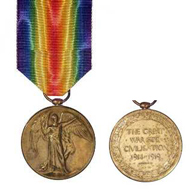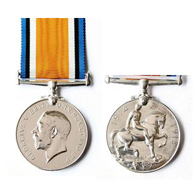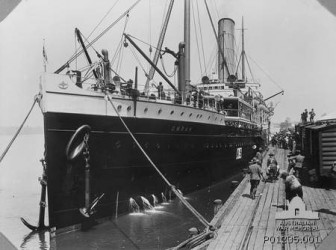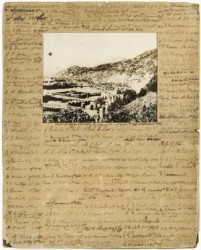ALLEN James George "Jim"
-

- 601
- Sergeant
- Corporal
- 9 Battalion
- Cooran
- Yes
- 23rd October 1881
- Warra, Queensland
- 22 August 1914
- SS A5 Omrah
- 24 September 1914
- Brisbane
-
James George Allen Jim was born at Warra in South West Queensland, the 2nd son born to Joseph Francis and Elizabeth Eliza Allen (nee Beard). Both parents had died before James enlisted in the Army, Joseph in 1903 and Elizabeth in 1914. James was 32 years old and had married Edith Ellen Benham in 1910, they had a son James and two daughters Ellen and Laura before he headed off to war. Prior to his enlistment at Maryborough on 22nd August 1914 he had spent 8 years in Wide Bay Infantry Regiment and was working as a labourer in Maryborough.In 1913 he was living at Bent Street, Gympie and working as a saw mill hand at the One Mile Sawmill. September 1914 saw him at the Enoggera barracks, Brisbane which was the main reception camp for Queensland recruits and a staging post before deployment. James was posted as a Private with 9th Battalion A.I.F and along with his younger brother William, embarked at Pinkenba Wharf, Brisbane aboard the H.M.A.T Omrah (A5). The ship sailed on 24th September 1914(see photos) at noon and the weather was good. H.M.A.T Omrah was part of the convoy carrying the first contingent to Egypt. The ship sailed in choppy seas and by 26th September anchored off Williamstown in Port Phillip. The Omrah remained in Port Melbourne until 19th October where the troops underwent on ship and land training. The ship sailed to Albany and left again on 1st November arriving at Port Said on 2nd December with reports of measles on board. Troops disembarked and headed for Mena Camp at Cairo where the troops undertook desert training. Between February and March 1915 the 9th Battalion, under orders, moved from Mena Camp through Alexandria to the Island of Lemnos where they encamped until orders for Gallipoli on 8th April 1915. The 9th Battalion embarked aboard the Malda for this last stage and under cover of darkness disembarked into lifeboats and were towed ashore at Kabe Tepe. From this point on fighting was heavy and losses were many as the battalion fought to establish their position on the ground. During these attacks the commanding officer recorded in the war diary that the Australians displayed great bravery and held on tenaciously. It was during this time that James received a gunshot wound to his right knee which required his admission to No. 1 Australian General Hospital at Heliopolis. Following initial treatment he was transferred to the 2nd General Hospital at Mena and by June he was able to rejoin his unit at Kabe Tepe. In July he developed eczema on his hands and was admitted initially to the hospital ship Neuralia for treatment and on 4th August 1915 was transferred to 1st Auxiliary Hospital at Cairo. By the end of August he left Mustapha on board the Huntsend again heading to Gallipoli. December 1915 he was transferred to 3rd Infantry Brigade Headquarters as Batman to Lt. Colonel Robertson until rejoining the 9th Battalion at Tel-el-Kebir around 10th January 1916. Tel-el-Kebir was a training centre for Australian Troops as well as a large Prisoner of War camp. His stay in Egypt lasted until the end of March 1916 when he embarked aboard the Saxonia to leave from Alexandria for the voyage to Marseilles to join the forces in France. In early March James was promoted to Lance Corporal and in May 1916 received Corporal status. In early June 1916 the 9th Battalion was in the Petillion sector, on the firing line, and being heavily bombarded by the enemy on their right flank. This is where James earned his Military Medal when as written in his citation that: he displayed the greatest coolness and showed great devotion to duty. He was posted with two small groups of look outs on the right flank of the new works in sector.8.3 a very exposed place. Very heavy shell fire developed over this sector and it became necessary to withdraw the garrison with the exception of the above quoted sentries. It was possible to arrange these groups in comparative safety but the N.C.O had to continually cross a very exposed area to visit the groups. This he did continually. Shells of all calibres were falling in this area, on one occasion a tree under which the Corporal was passing was struck by a shell and destroyed. Notwithstanding the danger to himself Cpl Allen remained cool and collected and continued to carry out his duties in a manner that can only be described as exemplary, his own calm having a considerable effect on his men. The shelling of this spot lasted for over an hour.
Recognition for this bravery was mentioned in the London Gazette on 27th October 1916 on page 10486 and further mentioned in the Commonwealth of Australia Gazette on 19th April 1917, page 918. From April 1916 to May 1917 James remained in the line of fire at Berteaucourt, Bonneville, Herrisart, Albert, Pozieres and Ypres with brief rest periods at Halifax Camp. During this time he was attached to the 1st Anzacs as an escort and promoted to Sergeant. During May he was detached from the 9th Battalion and sent to Durrington in England and into the 3rd Training Battalion and it is here during the six weeks of physical training that he started to experience the heart condition that would eventually take his life. After five months in England he received orders to again return to general service in France and left via Folkestone to arrive in the camp at Havre from where on 5th October he rejoined the 9th Battalion. At this time the battalion was on the dominion lines and moving through the Pachendale Broodseinde Ridge where there was heavy shelling and gas shell attacks. In November the unit received orders to proceed into Halifax Camp to regroup. Christmas of 1917 was spent on the front line near Messines and according to war diaries each soldier received a writing wallet and had enough food and beer to celebrate the occasion and thankfully shelling was mild. James returned to England for a return to Australia and arrived via Weymouth in March 1918. He sailed on the H.M.S Kenilworth Castle on 12th March detailed as part of ships staff and travelled via Durban before disembarking from the Field Marshall in Australia on 22nd May 1918. His name appeared on list L in The Brisbane Courier on 17th May 1918 and The Queenslander 25th May 1918 of invalid soldiers returning home. He disembarked on 22nd May to 1st Military District as permanently unfit for service and received the customary Red Cross welcome lunch. He was discharged on 9th August 1918 and returned to his family. By 1919 he was in Cooran as a labourer before moving to George Street, Rosalie, Brisbane as a timber worker. He died on 18th June 1920 from Endocarditis and Syncopy while in the 17th Australian General Hospital, Brisbane. Note photograph of Landing at Gallipoli has signature of Sgt. James George Allen 601 center top of picture. Brothers who also served in WW1 - William 552, John Walter 1502, Samuel 1713, Archibald 1757.
-
- Egypt
- Gallipoli
- Passchendaele
- Ypres
-

-

-

-

- Returned to Australia
- 12 March 1918
- 18 June 1920
- Brisbane
- 39
- Toowong Cemetery, Portion 10,Section 40,Grave 3 UBD Map 158 N13
-
Shire of Noosa Roll of Honor, Shire Council Chambers, Pelican Street, Tewantin
Cooran District Soldiers Poster - No 1 in Returned Soldiers
-
http://www.1914-1918.net/hospitals_uk.htm
http://www.anzacday.org.au/history/ww1/anecdotes/hospitals.html
http://www.cwgc.org/
- Robyn Dahl


